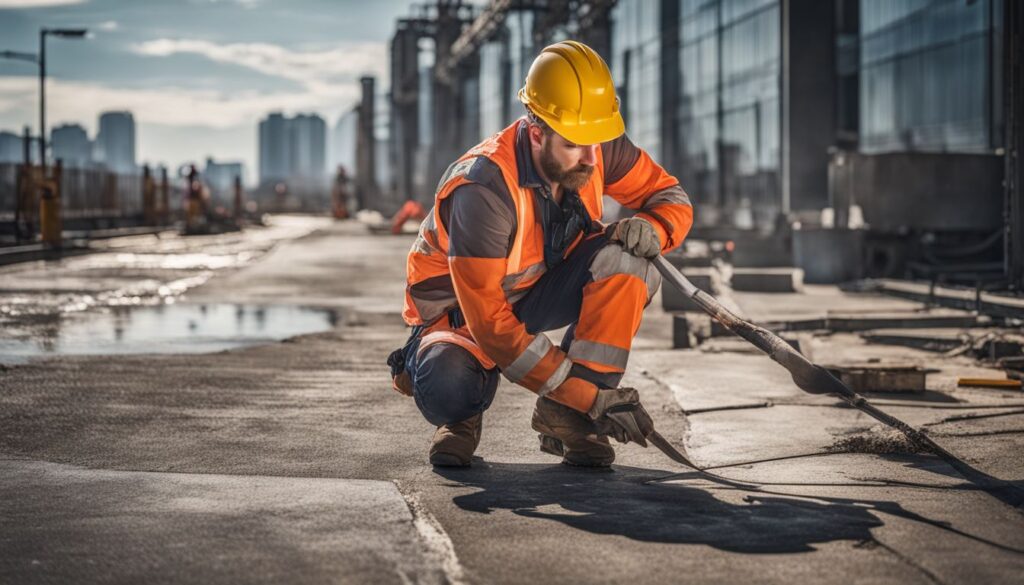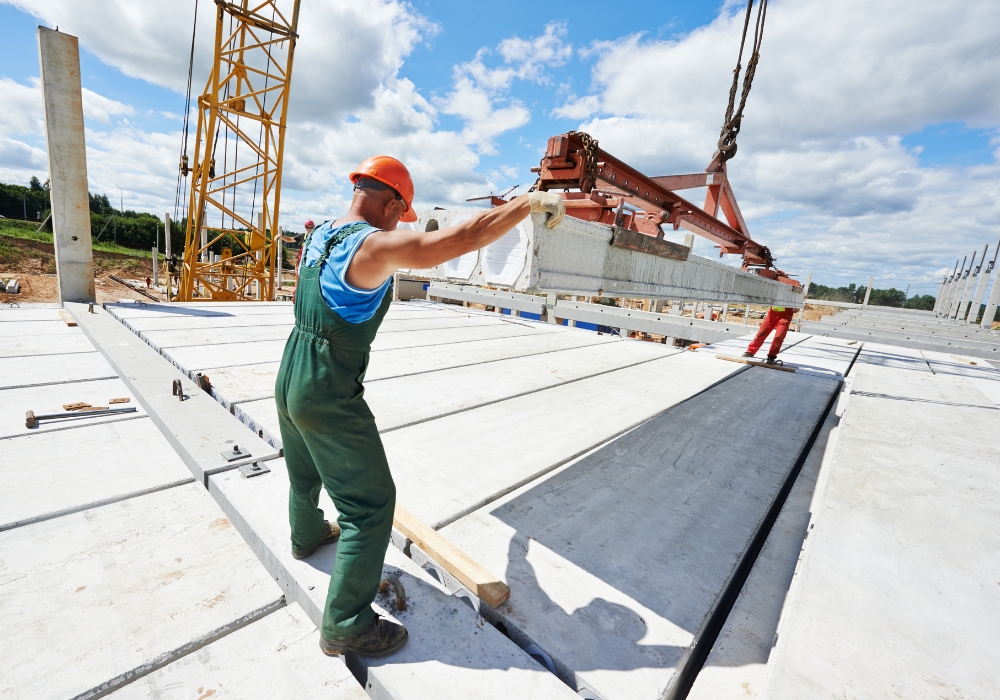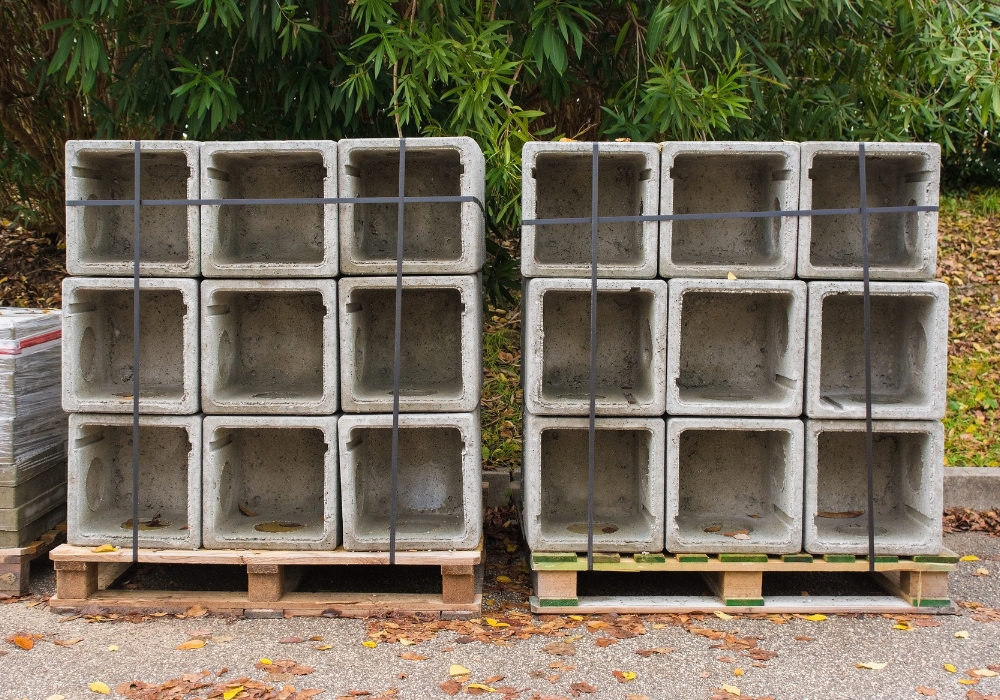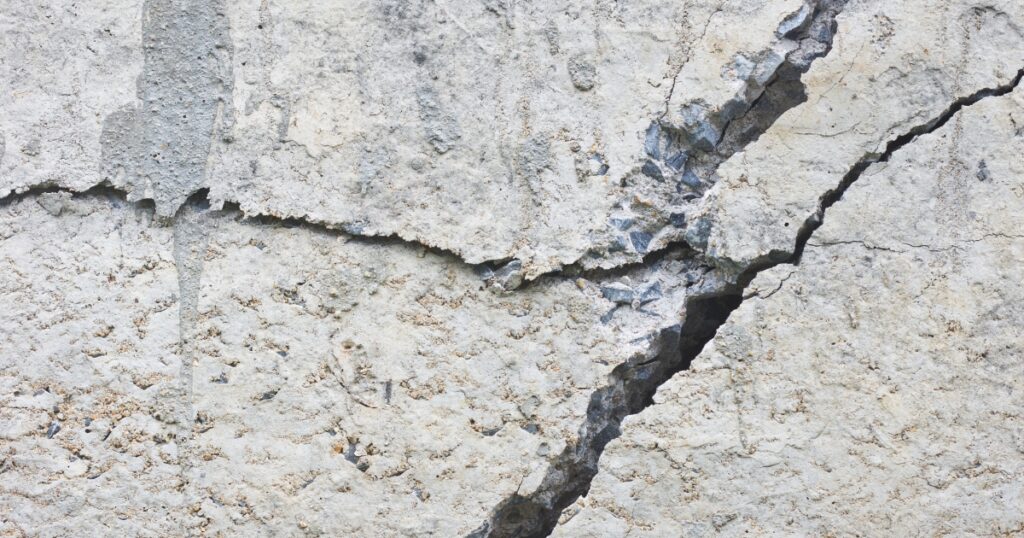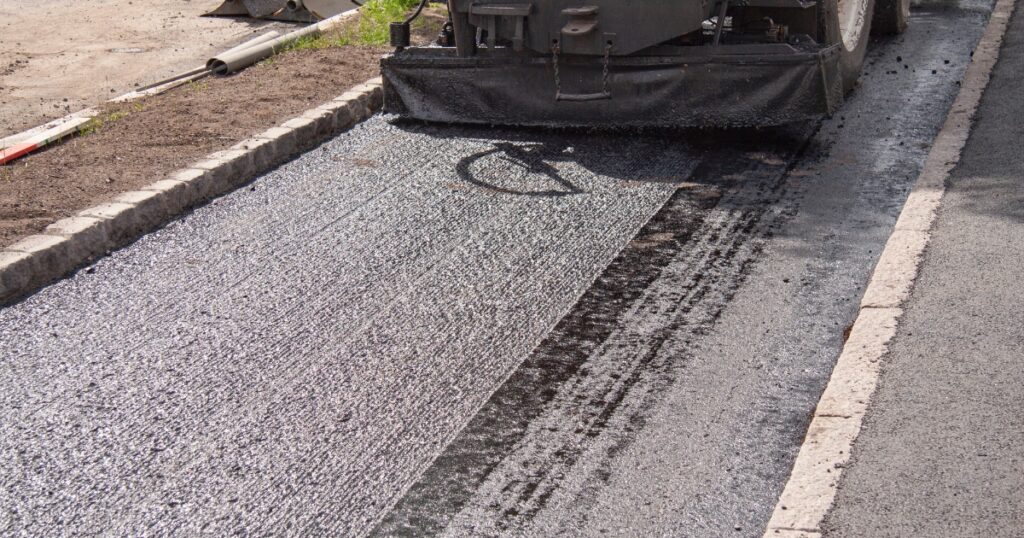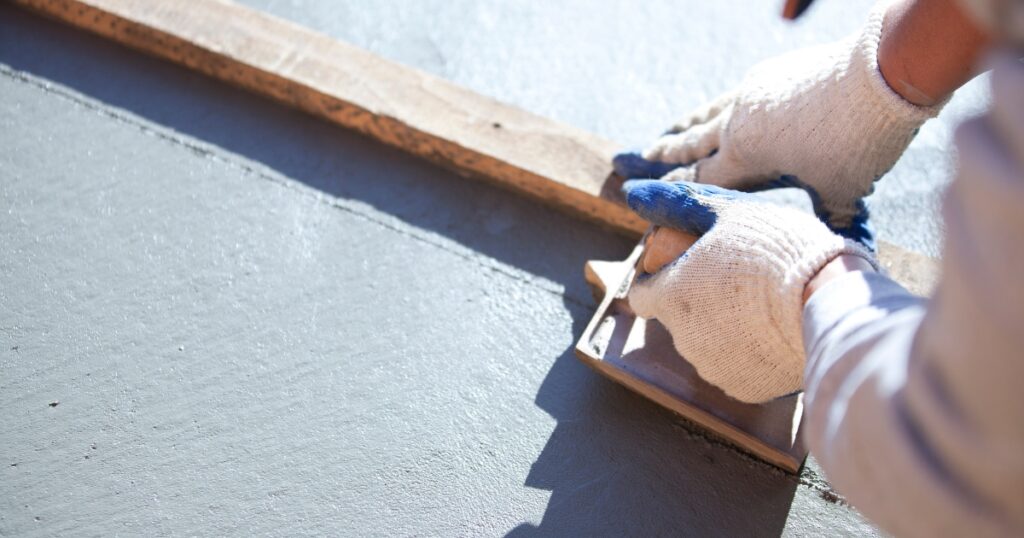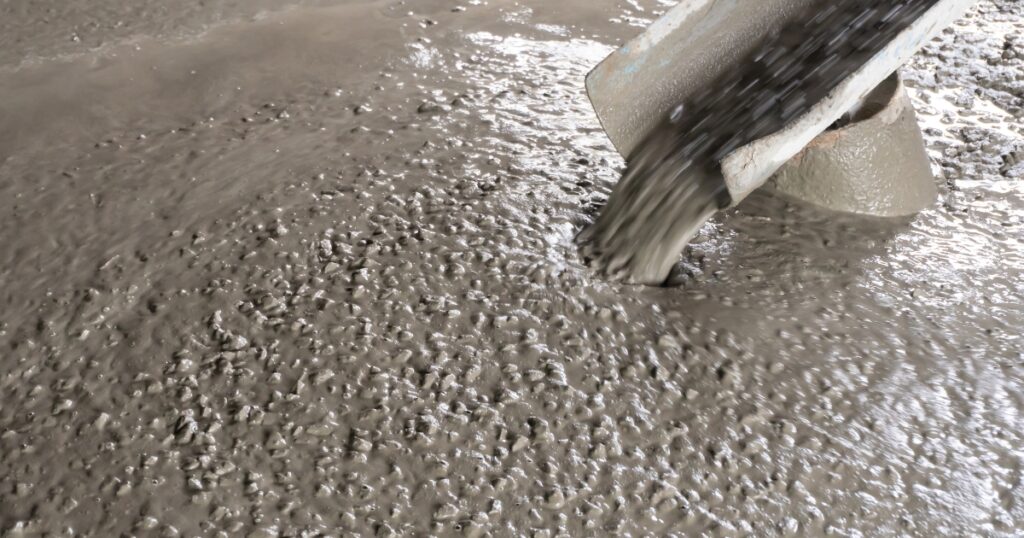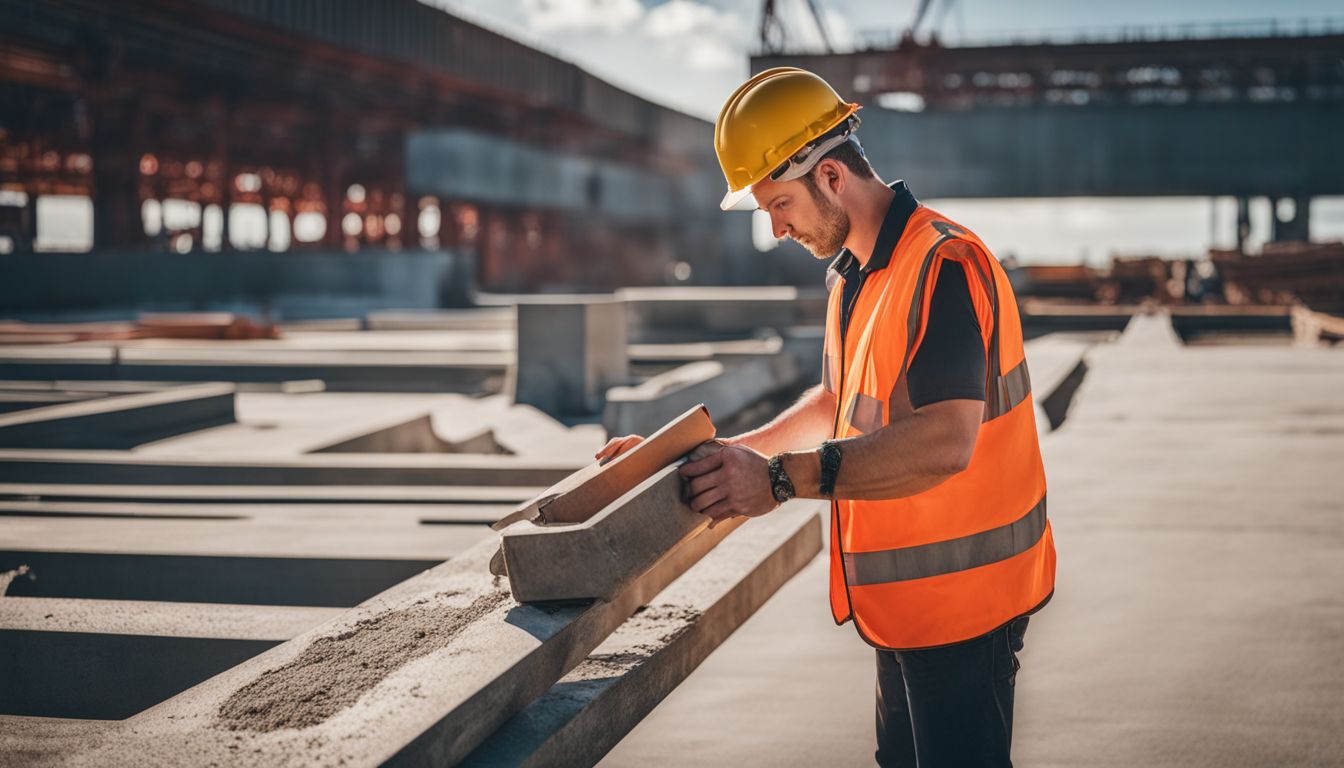
Many businesses find themselves up against the early wear and tear of their concrete structures, a struggle we know all too well. Our digging around unveiled that more than 70% of structural failures come down to not quite giving maintenance the attention it deserves.
Through our thorough research, we’ve pieced together proactive strategies that are sure bets for enhancing concrete durability. You’ll be surprised at how straightforward looking after your assets can actually be, mate.
Understanding the Basics of Concrete Maintenance and Repair
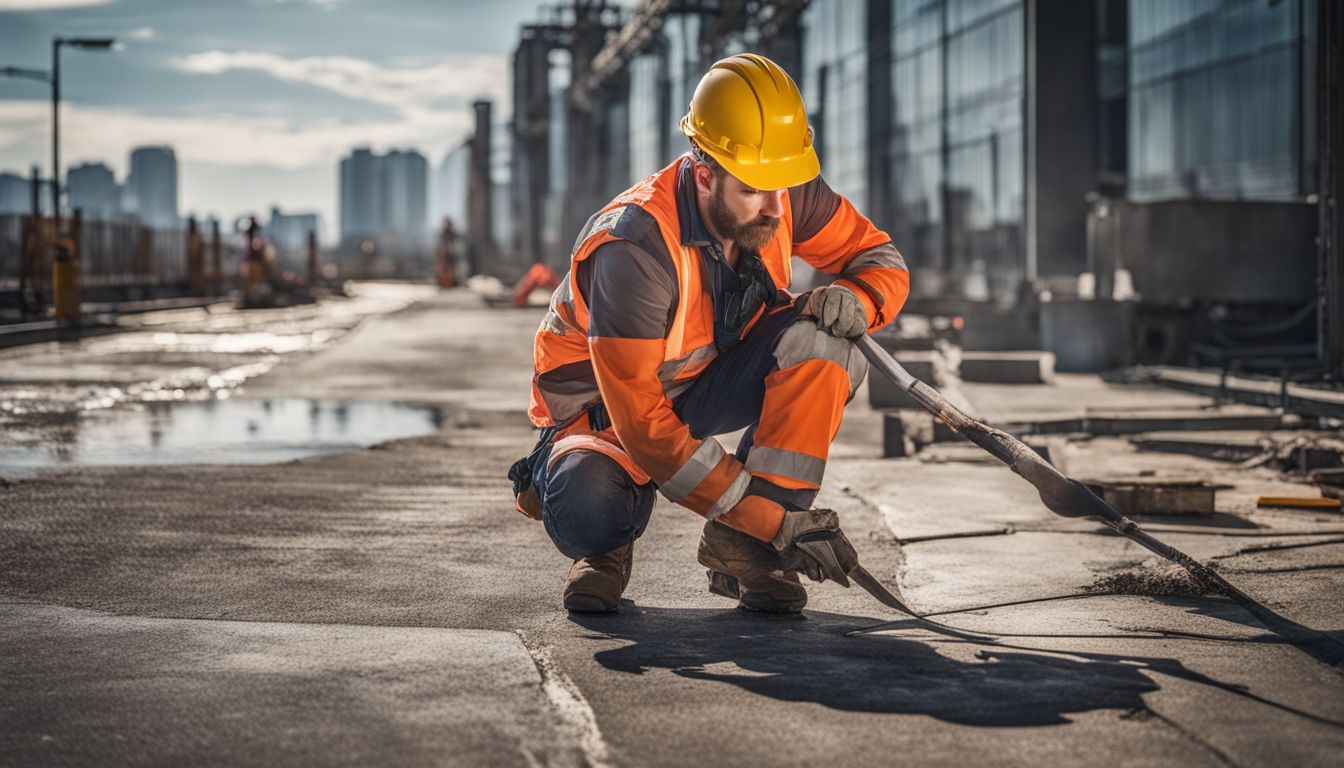
Identifying common concrete issues, implementing effective strategies for preventing damage, and mastering proper repair techniques form the cornerstone of robust concrete maintenance and repair.
Learning about these fundamentals equips you with the knowledge to proactively manage your infrastructure’s longevity.
Identifying Common Concrete Issues
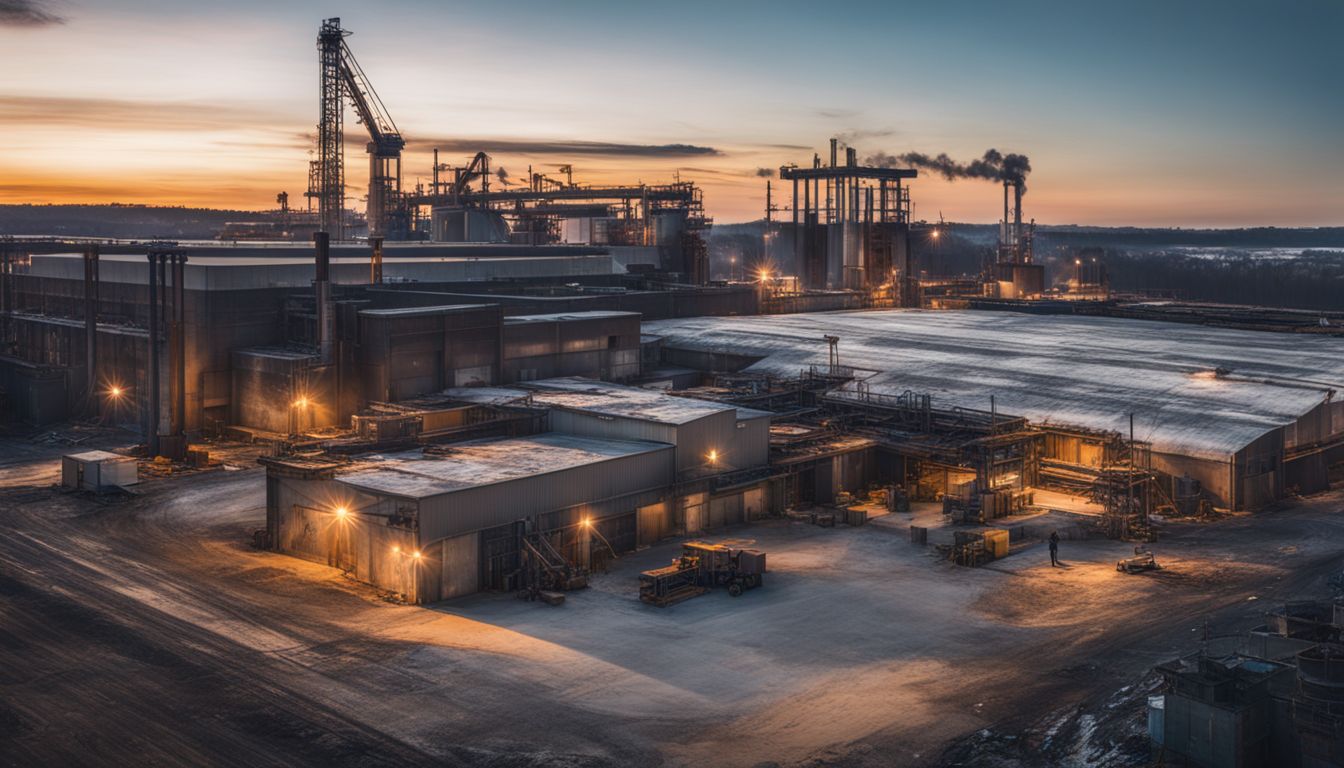
We understand the importance of maintaining concrete durability and ensuring asset longevity for business owners. Recognising common concrete issues plays a crucial role in proactive maintenance strategies.
- Cracking: Concrete may crack due to thermal expansion, shrinkage, or stress. We see cracks as warning signs that require immediate attention to prevent further damage.
- Spalling: This involves the breaking or flaking off of the concrete surface, often caused by rebar corrosion within. Addressing spalling early can save extensive repairs later.
- Discolouration: Changes in colour on a concrete surface usually result from inconsistent curing, water stains, or mould growth. Cleaning and sealing practices help maintain appearance and durability.
- Efflorescence: We notice this white powdery substance on surfaces when water-soluble salts rise to the top of concrete. It indicates moisture issues that need resolving to protect structural integrity.
- Pitting and Bubbling: Poor installation techniques can lead to small holes or bubbles in the concrete, compromising its strength and aesthetics.
- Scaling: Exposure to freeze-thaw cycles often leads to scaling, where the concrete surface peels away in layers. Using quality materials and proper finishing techniques reduces scaling risks.
Each of these common issues requires swift action to uphold the structural resilience and durability maintenance of your assets. Through regular inspections and addressing minor problems promptly, we ensure protective measures are effectively applied for long-term sustainability and longevity of your concrete structures.
Effective Strategies for Preventing Concrete Damage
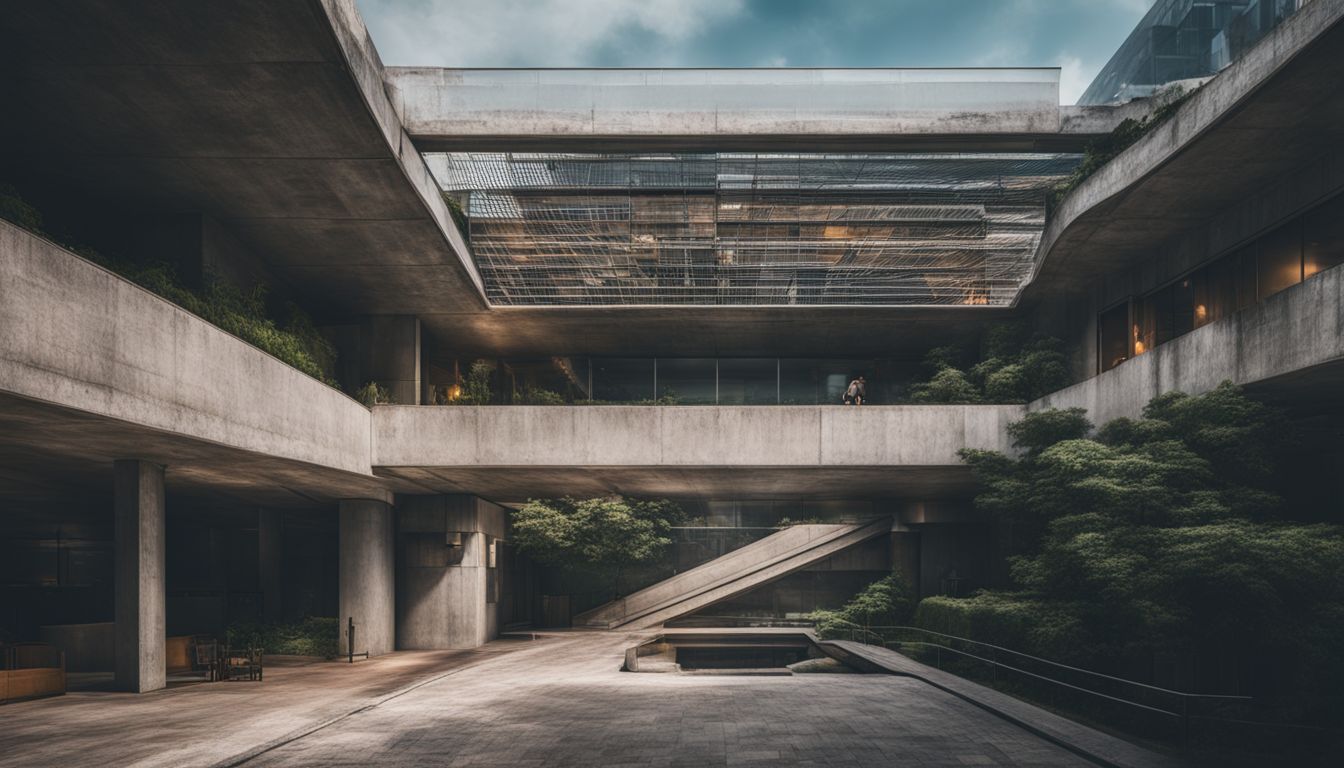
We understand the importance of concrete as a foundational element in construction. To ensure its longevity and durability, adopting effective strategies for preventing concrete damage is essential. Here’s a list of proactive steps we recommend to business owners looking to maintain the integrity of their concrete assets:
- Conduct regular inspections: Keep an eye out for early signs of wear and tear. Cracks, holes, or water damage can escalate if not addressed promptly.
- Apply protective coatings: Use high-quality sealants to protect the surface from water penetration, chemical spills, and UV radiation.
- Ensure proper drainage: Water should never pool on concrete surfaces. Design landscapes and structures with adequate drainage systems to avoid water-related damage.
- Use quality materials during construction: Opt for high-grade concrete mix and reinforcement materials that suit your specific environmental conditions and load requirements.
- Implement control joints: These are planned cracks that allow concrete to expand and contract with temperature changes, reducing stress on the material.
- Avoid chemical deicers in winter: Chemicals used for melting ice can aggressively deteriorate concrete surfaces. Choose physical methods for ice removal when possible.
- Limit heavy loads: Concrete has a maximum load capacity. Overloading it can cause cracks and structural damage, so monitor and limit weight on concrete surfaces.
- Educate your team about proper use and maintenance: Everyone involved should know how to care for concrete by avoiding harmful practices such as dragging sharp objects across surfaces.
- Engage in timely repairs: Small issues can become big problems if ignored. Repair minor cracks or damages immediately with appropriate materials and techniques.
- Schedule professional assessments: Sometimes, expert eyes catch what we miss. Have professionals conduct thorough inspections periodically to ensure hidden issues don’t go unnoticed.
By taking these steps seriously, we not only preserve the visual appeal of our structures but significantly enhance their lifespan and performance against environmental stressors.
Proper Techniques for Repairing Concrete
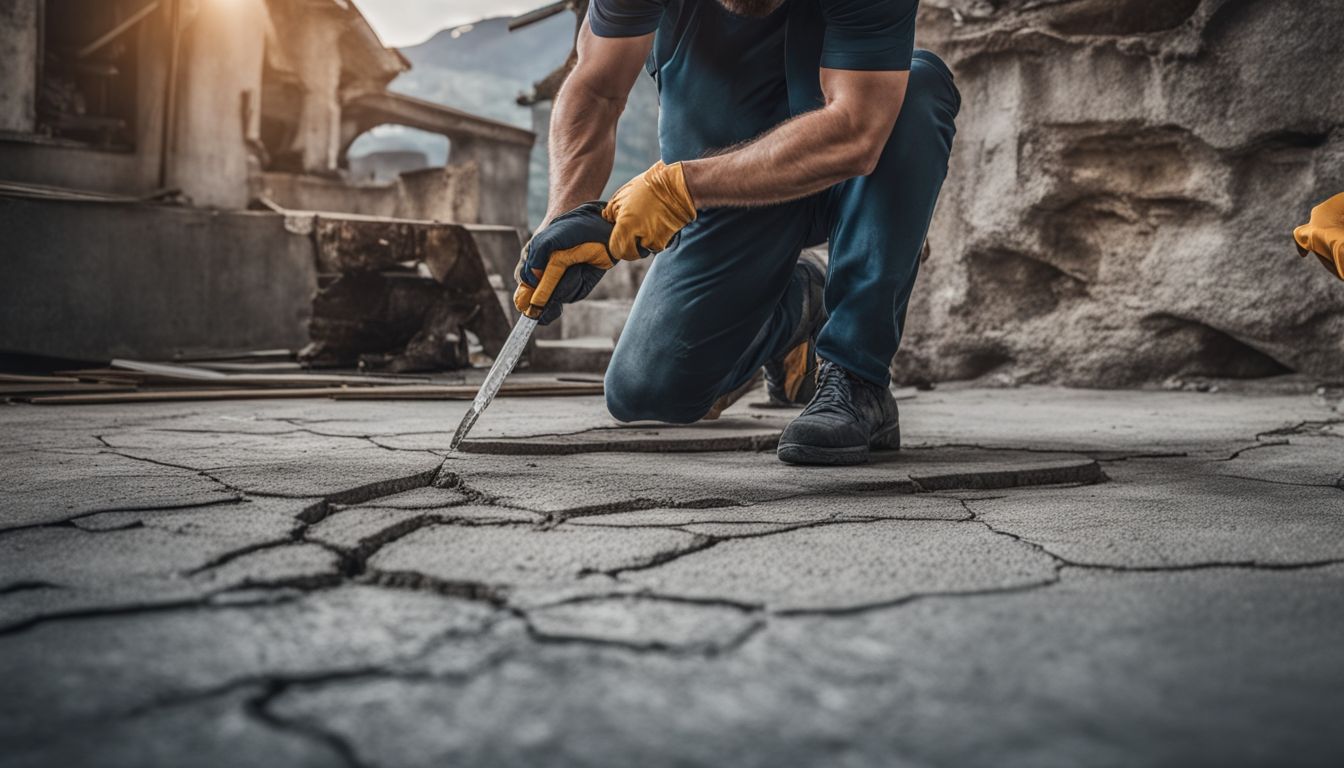
Repairing concrete correctly extends its life and maintains structural integrity. We focus on practical methods to ensure repairs last, boosting the longevity of your business assets.
- Identify damage early. Spotting cracks or wear before they worsen can save time and money. Regular checks allow timely intervention.
- Clean the area thoroughly. Before any repair, remove debris and dust from cracks or damaged parts to allow for a strong bond with repair materials.
- Use the right materials. Select repair products suited to the concrete’s environment, ensuring compatibility and durability.
- Apply bonding agents. These enhance adhesion between old and new concrete surfaces, critical for long-lasting repairs.
- Fill cracks correctly. Employ techniques that ensure full penetration of repair material into cracks, avoiding voids that weaken the structure.
- Properly cure repaired areas. Follow guidelines for curing times to guarantee maximum strength of the repair work.
- Seal the surface after repair. This step prevents water ingress and protects against harsh environmental conditions.
- Monitor repairs over time to evaluate effectiveness and determine if further maintenance is necessary.
Each step plays a vital role in achieving durable, effective concrete repairs that support your business infrastructure’s resilience against wear and damage over time.
Proactive Maintenance Practices for Concrete Durability
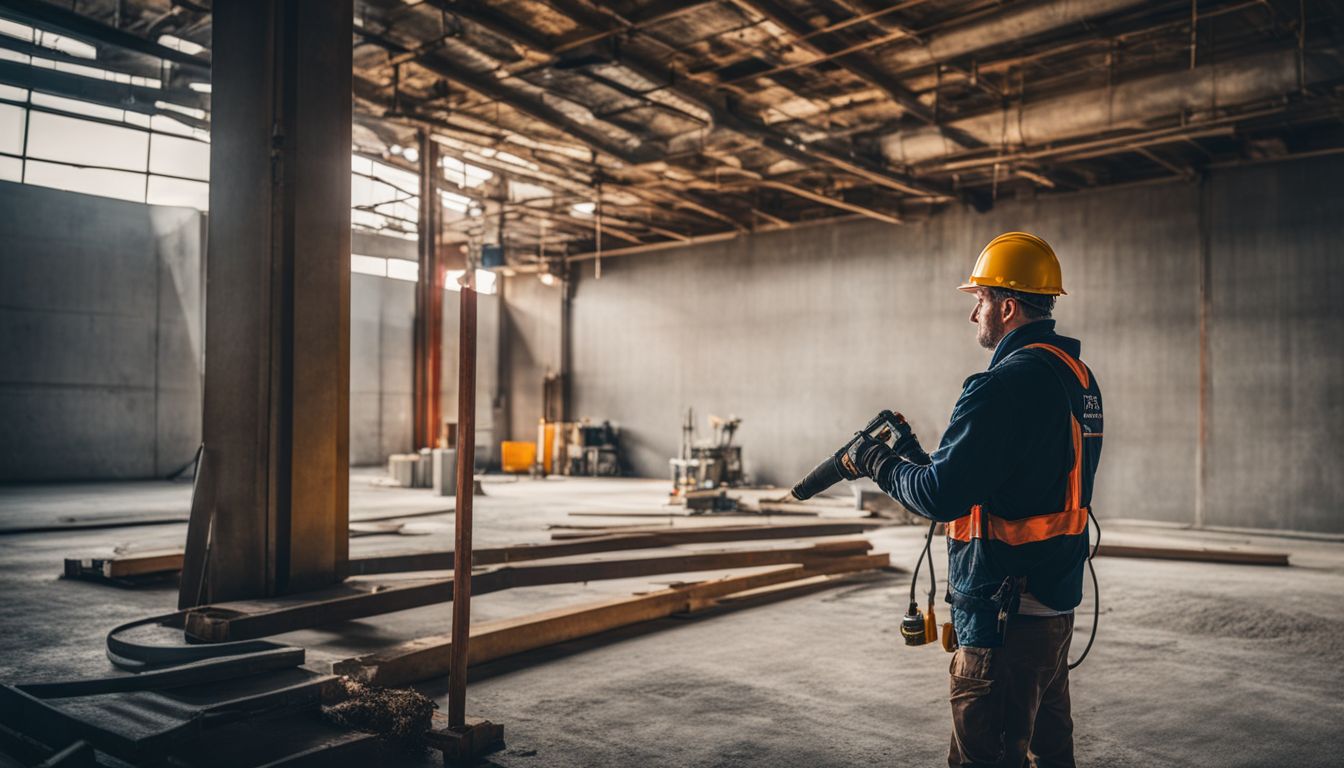
Proactive maintenance practices for concrete durability involve conducting regular inspections and addressing minor issues promptly. Re-coating strategies also play a crucial role in ensuring the longevity of concrete structures.
Regular inspections
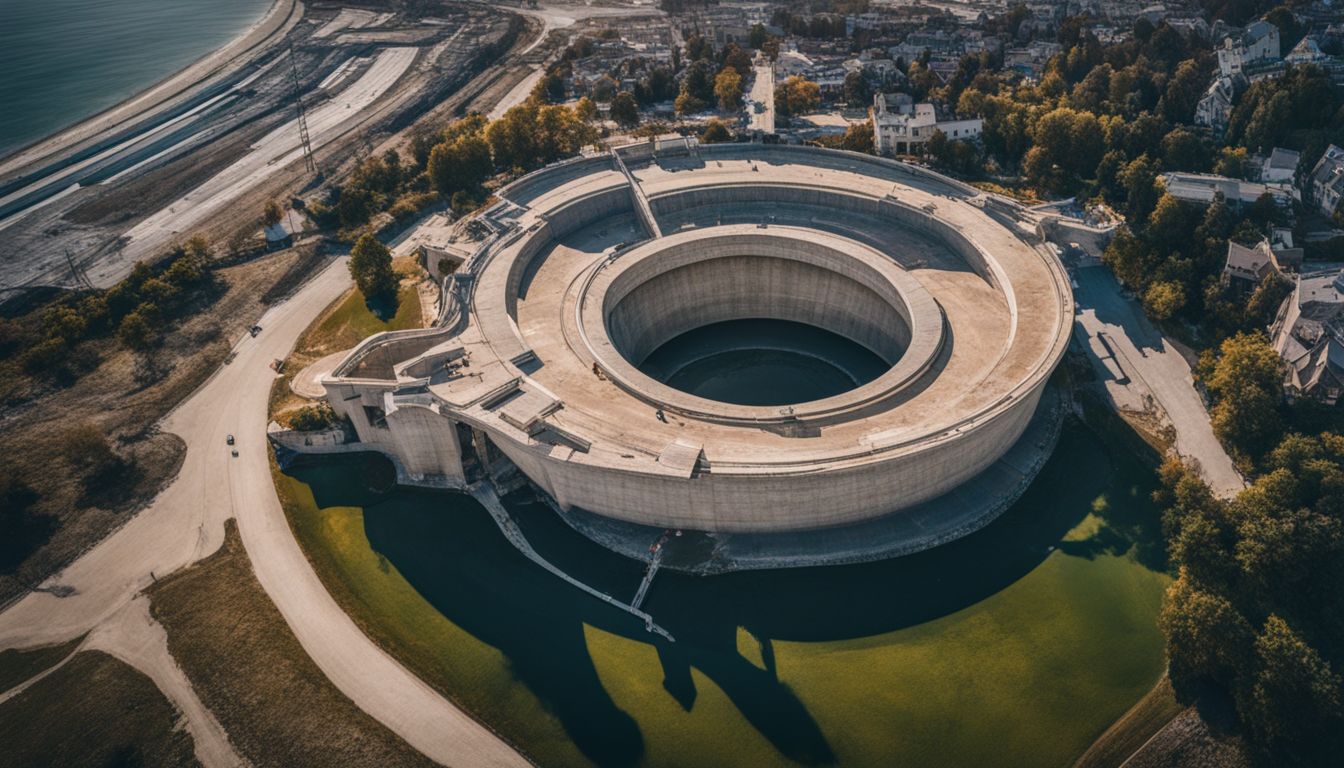
Regular inspections are crucial for maintaining the longevity and durability of concrete structures. We always focus on proactive maintenance strategies to preserve our assets and ensure their structural resilience.
Here’s how we go about it:
- Schedule periodic reviews: We mark our calendars for frequent inspection rounds, targeting different aspects of the structure each time. This approach helps us catch potential issues before they escalate into major problems.
- Use checklists for thoroughness: For every inspection, we follow a detailed checklist tailored to the specific needs of the structure. This ensures nothing gets overlooked in our quest to maintain asset longevity.
- Employ expert inspectors: Our team consists of professionals with a keen eye for detail and extensive knowledge in spotting signs of wear or damage that might not be obvious at first glance.
- Incorporate technology: We leverage modern technology, including drones and structural health monitoring devices, to assess hard-to-reach areas and gather precise data about the condition of our concrete infrastructure.
- Focus on environmental impact: Understanding that aggressive environments can accelerate degradation, we pay special attention to parts of the structure exposed to harsh conditions.
- Act swiftly on findings: Identifying an issue is just the first step; acting quickly to address minor issues prevents them from spiralling into costly repairs or replacements down the line.
- Educate staff: Keeping our entire team informed about what signs of deterioration to look out for empowers them to act as additional eyes on the ground, further ensuring proactive maintenance.
- Document everything: All inspections and subsequent actions are meticulously recorded, creating a comprehensive history that aids in future maintenance planning and enhances preventative strategies.
- Update maintenance plans regularly: We continually refine our maintenance schedules based on insights gained from regular inspections, adapting our strategies to meet evolving challenges head-on.
Implementing these practices allows us to extend the lifespan of our concrete infrastructures significantly, preserving their strength and functionality for years to come without compromising on safety or aesthetics.
Addressing Minor Issues
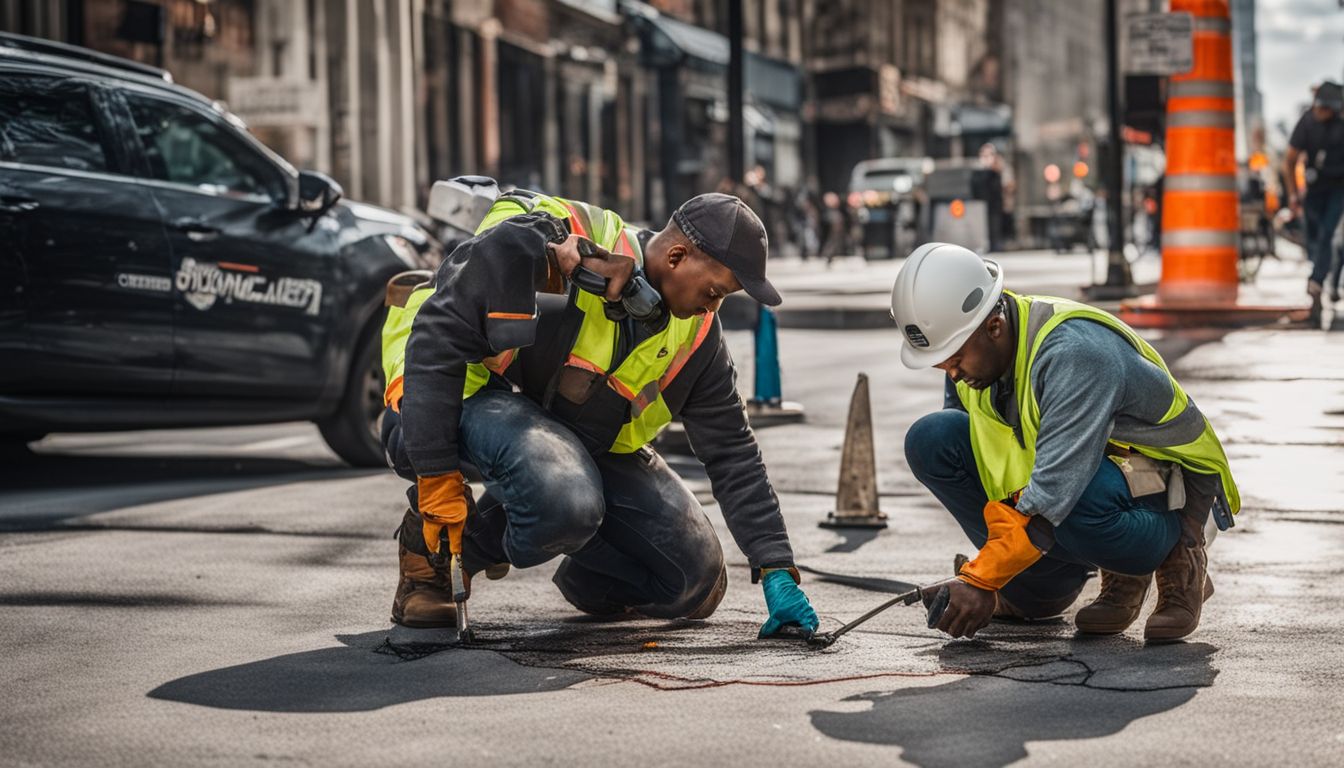
We know that addressing minor issues early on can prevent major problems for our concrete structures. These small actions contribute significantly to the longevity and durability of our assets.
- Conduct visual inspections monthly to spot any cracks or signs of wear. Regular check – ups allow us to identify problems before they become serious.
- Clean spills immediately to prevent stains or chemical damage. Certain substances can harm concrete if left unattended for too long.
- Fill in small cracks promptly using a suitable concrete patching compound. This prevents water from seeping in and causing further deterioration.
- Apply sealant annually to protect the surface from water penetration and weather – related wear. Sealants act as a barrier, keeping our structures safe from various harmful elements.
- Ensure proper drainage around concrete surfaces to prevent water accumulation. Standing water is a primary enemy of concrete, leading to faster degradation.
- Remove weeds or plants growing near concrete areas as their roots can cause cracking and structural damage over time.
Turning our attention to re-coating strategies will be our next focus, ensuring further protection against environmental challenges.
Re-coating Strategies
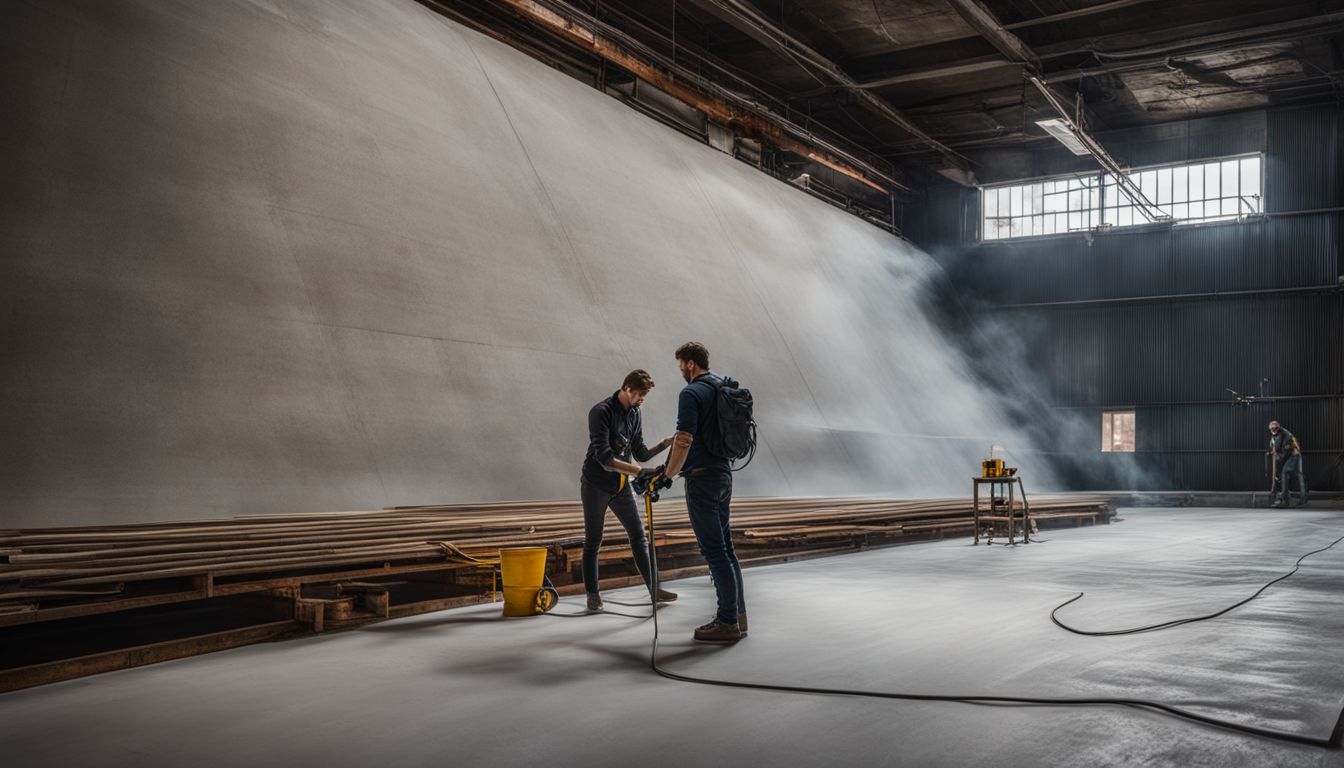
Re-coating strategies play a key role in proactive maintenance practices for concrete durability. They involve applying a new protective layer to existing concrete surfaces to shield them from wear, tear, and environmental factors.
This process ensures the longevity of structures by preventing water penetration, chemical damage, and corrosion of reinforcement within the concrete.
Our approach includes selecting high-quality coatings that match the specific needs of each structure. We assess the current condition of the concrete and choose products that provide superior adhesion, flexibility, and weather resistance.
By doing so, we guarantee not only an extended lifespan for assets but also maintain their aesthetic appeal over time. This method serves as a cost-effective solution for preserving structural integrity and enhancing overall asset value.
Repair as a Strategy of Managing Structure Durability
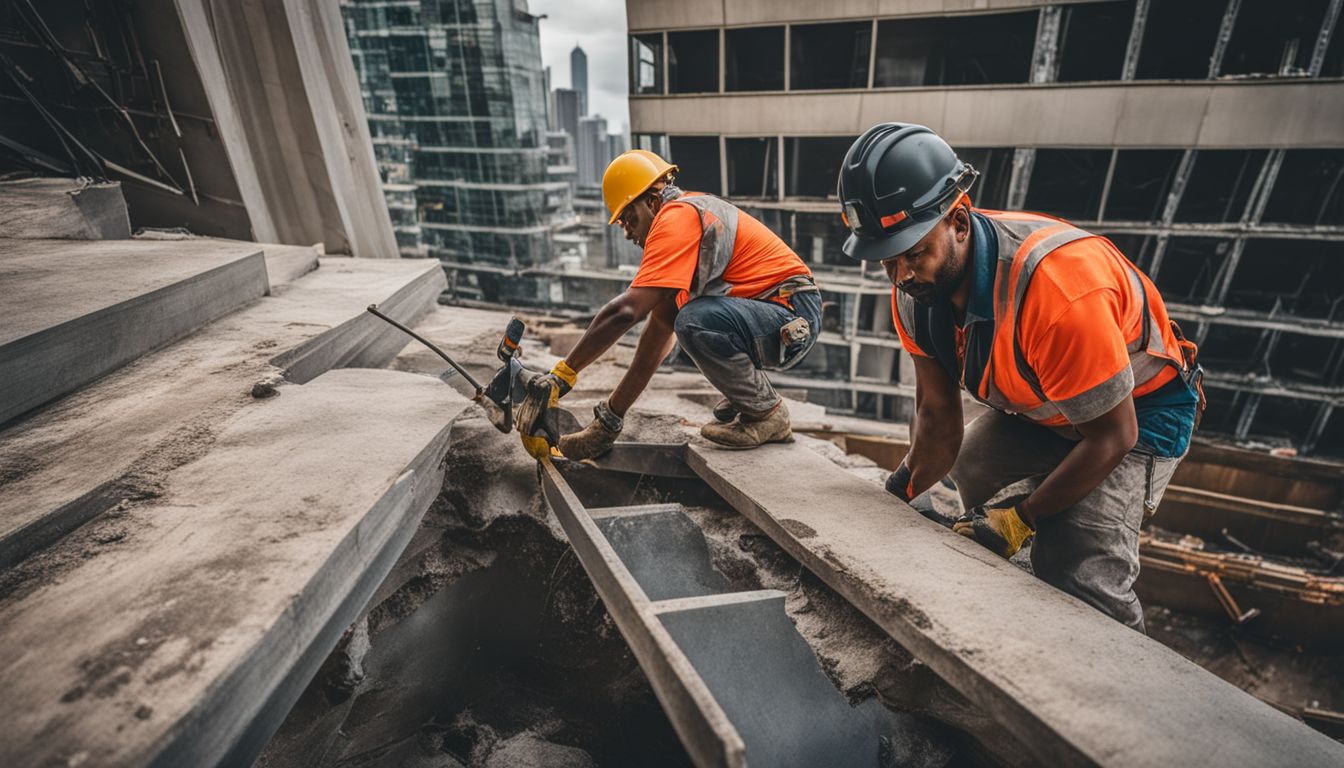
Repairing concrete is a key strategy in managing the durability of structures, ensuring long-term resilience and reducing maintenance costs. To learn more about expert strategies for concrete maintenance and repair, dive into our comprehensive guide.
Repair Durability Determinants
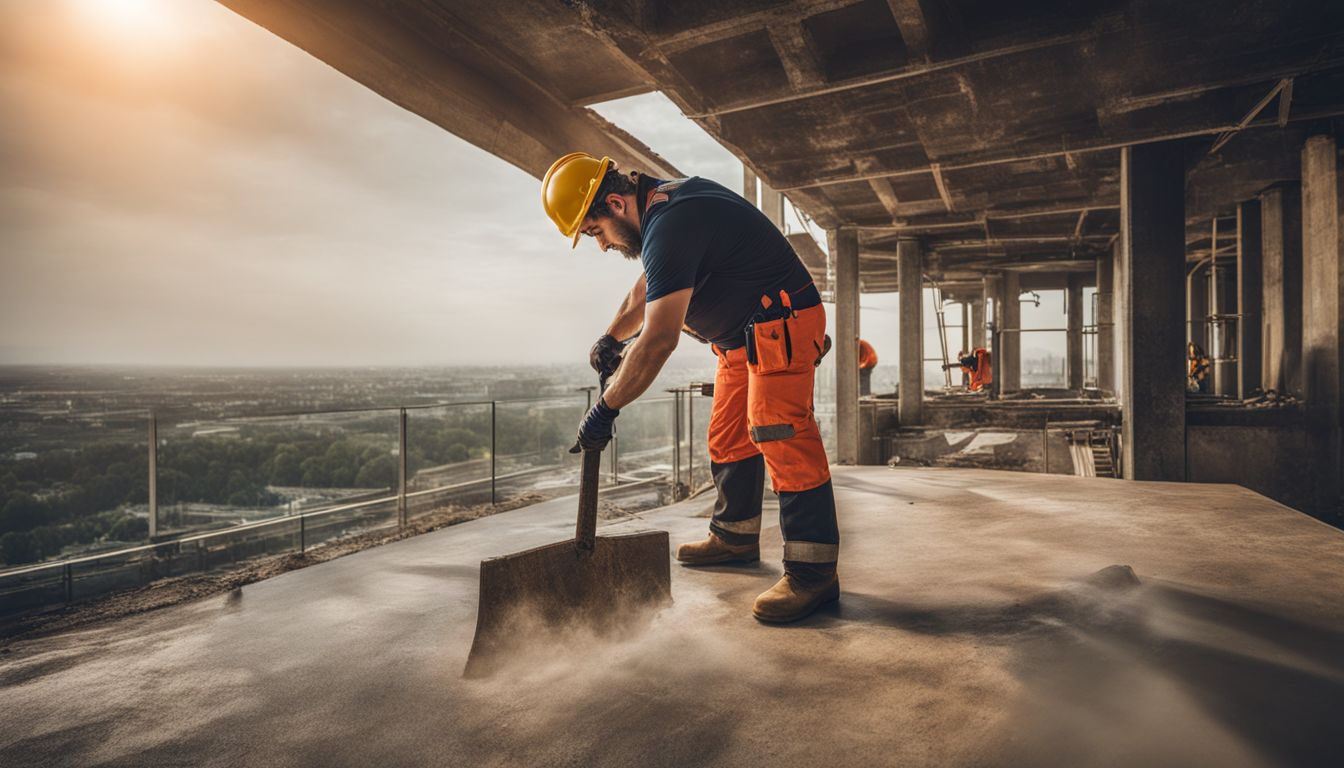
We understand that the durability of repairs is critical to maintaining the structural longevity and asset preservation crucial for business owners. Factors like the quality of materials used, environmental conditions, and the application technique play a significant role in determining repair longevity.
Our approach focuses on using high-quality concrete mixtures and protective coatings to ensure each repair not only addresses current issues but also stands up well against future threats.
Our team prioritises proactive monitoring and preventive maintenance as key strategies for extending the life cycle of concrete structures. We assess each situation thoroughly to choose the most suitable solutions tailored to specific environmental challenges.
This careful selection process ensures that our repairs offer maximum durability, protecting your investment against corrosive elements and extreme weather conditions effectively. Through regular inspections, we continually evaluate these repairs, adapting our methods as necessary to guarantee long-lasting resilience in all structures we maintain.
Estimating Repair Durability
When estimating repair durability, factors such as the type and severity of damage, the environment, and the materials used play a critical role. Understanding these determinants allows for accurate predictions on how long repairs will last and aids in selecting the most suitable repair strategies.
Regular assessments help gauge potential weaknesses, enabling proactive interventions to be tailored according to specific needs. By considering these aspects in our predictive maintenance approaches, we enhance the longevity of concrete structures through strategic decision-making and targeted action.
The Role of Concrete Coating in Maintenance
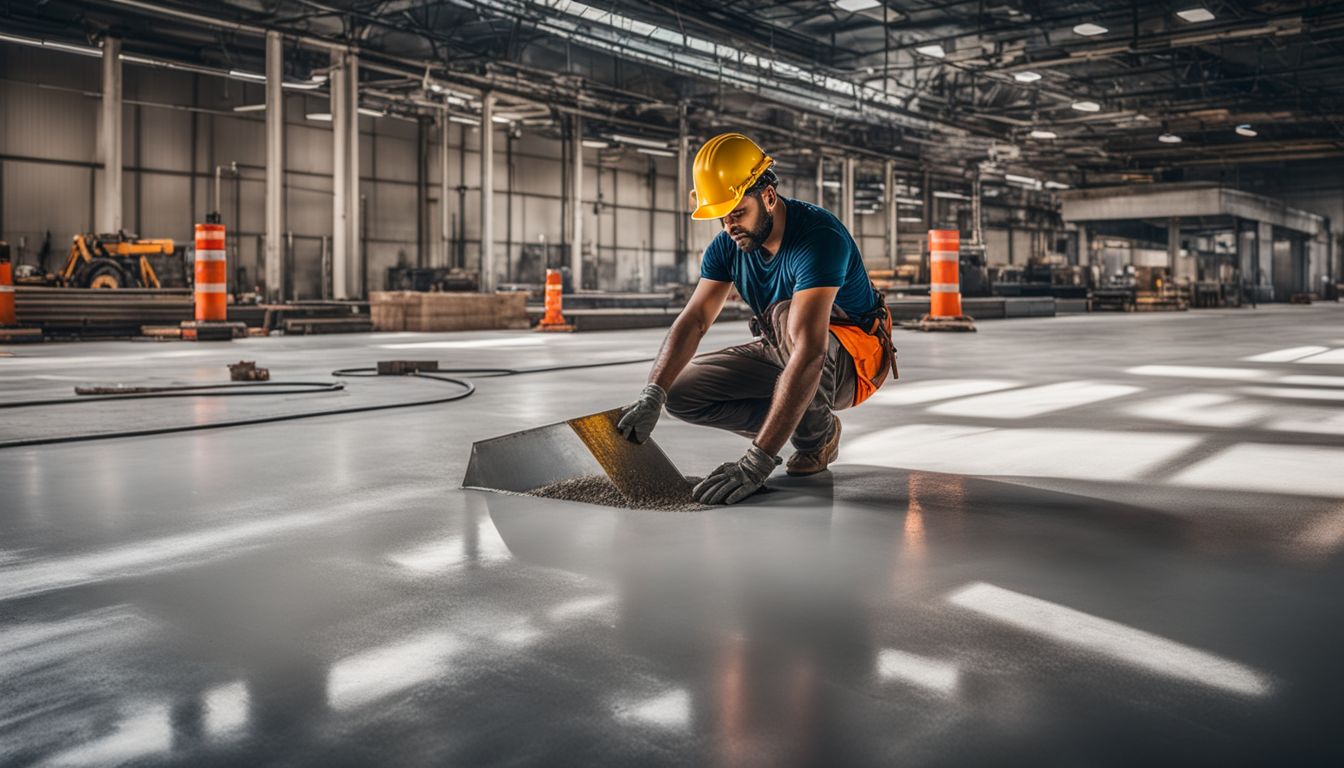
Concrete coating plays a crucial role in maintaining the integrity and longevity of concrete surfaces, providing a protective layer that enhances resistance to wear, impact, and chemical exposure.
To discover more about the benefits of concrete coatings and how they can optimise maintenance strategies for your business, read on.
Essential Care Tips for Concrete Coating
Concrete coating is a crucial aspect of maintaining the durability and longevity of your infrastructure. Here are essential care tips to ensure the effectiveness and longevity of your concrete coatings:
- Regular Cleaning: Periodically clean coated surfaces with a non-abrasive, pH-neutral cleaner to remove dirt, grime, and other contaminants that can compromise the coating’s integrity.
- Avoid Harsh Chemicals: Refrain from using harsh chemicals or abrasive cleaners that can erode the protective layer of the coating, leading to premature degradation.
- Timely Inspections: Conduct regular inspections to identify any signs of wear, chipping, or cracking in the coating. Promptly address any issues to prevent further damage.
- Protective Measures: Implement measures to safeguard coated surfaces from heavy impact and abrasion, such as installing protective mats or barriers in high-traffic areas.
- Monitoring Environmental Exposure: Be mindful of environmental factors such as extreme temperatures, UV exposure, and moisture levels that can affect the performance of the coating.
- Recoating when Necessary: Plan for periodic recoating to maintain optimal protection and extend the service life of the concrete coating system.
- Professional Maintenance: Engage qualified professionals for comprehensive maintenance and repair services to ensure proper care and preservation of your concrete coatings.
Implementing these essential care tips will contribute significantly to maximising the resilience and longevity of your coated concrete surfaces while minimising repair costs in the long run.
Cleaning and Maintenance Guidelines for Coated Concrete
When it comes to maintaining coated concrete, following proper cleaning and maintenance guidelines is crucial for preserving its durability and appearance. Here are essential steps for keeping coated concrete in prime condition:
- Regular Cleaning: Thoroughly clean the surface using a mild detergent and water to remove dirt, debris, and stains. Use a soft-bristle brush or mop for effective cleaning without causing damage.
- Avoid Harsh Chemicals: Refrain from using acidic or abrasive cleaners as they can erode the protective coating and compromise the integrity of the concrete surface.
- Routine Inspections: Periodically inspect the coated concrete for any signs of wear, abrasions, or areas where the coating may be deteriorating. Promptly address any issues to prevent further damage.
- Preventative Maintenance: Apply a fresh coat of sealant or protective finish as per manufacturer recommendations to enhance resistance against moisture, UV rays, and physical wear.
- Spill Cleanup: Immediately clean up any spills on the coated concrete surface to prevent staining and potential damage to the protective coating.
- Regular Maintenance Schedule: Establish a schedule for routine maintenance tasks such as sweeping, dusting, and minor spot-cleaning to preserve the appearance and longevity of the coating.
- Professional Inspection: Periodically engage professional experts to conduct comprehensive inspections of the coated concrete surface and perform any necessary repairs or reapplication of protective coatings.
These practical guidelines will contribute significantly to maintaining your coated concrete surfaces at their best while ensuring long-term durability and structural resilience.
Unlocking Durability: Expert Strategies for Concrete Maintenance and Repair
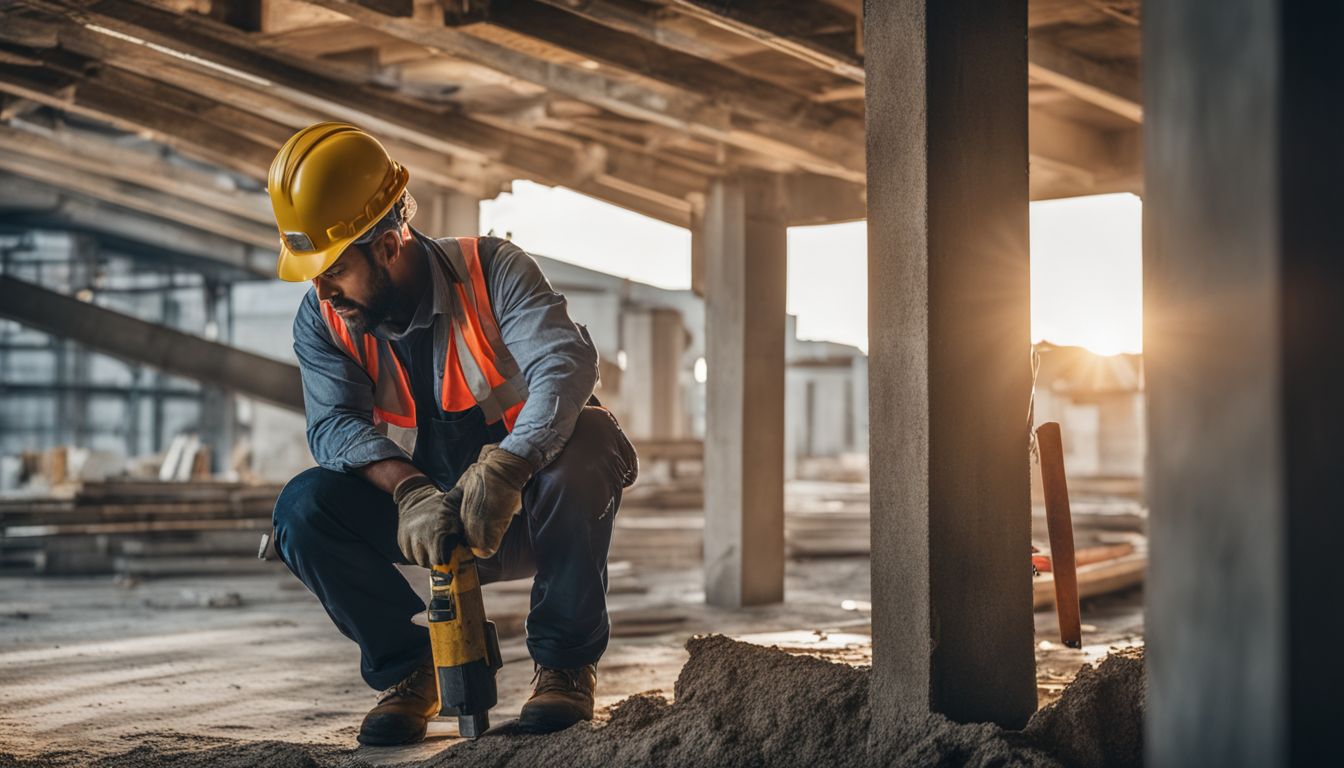
Optimising the longevity of concrete assets requires expertise in maintenance and repair strategies. Our insightful article offers actionable guidance for enhancing the durability of concrete structures.
Whether you are involved in infrastructure management or construction, this article will provide comprehensive insights on proactive maintenance practices and effective repair strategies to unlock the secrets of durable concrete.
Routine Maintenance
Routine maintenance is crucial in ensuring the longevity and durability of concrete structures. Here are key strategies to consider:
- Regular inspections: Schedule routine inspections to identify any signs of wear, cracks, or surface damage.
- Cleaning and debris removal: Keep surfaces clean and free from debris to prevent build-up and potential damage.
- Moisture control: Regularly inspect for and address any areas prone to water accumulation to prevent erosion and deterioration.
- Surface sealing: Implement regular re-sealing to maintain the integrity of the concrete surface against environmental elements.
- Coating assessment: Periodically assess the condition of protective coatings and reapply as needed for continued protection.
These proactive steps contribute significantly to the preservation and maintenance of concrete assets, safeguarding their longevity in diverse environmental conditions.
Addressing Common Issues
To ensure the longevity of your concrete assets, addressing common issues is crucial. Here are proactive strategies to tackle common concrete maintenance and repair problems:
- Implement a regular inspection schedule to identify any early signs of damage and address them promptly.
- Address minor issues such as cracks or surface imperfections before they escalate into more significant problems.
- Employ re – coating strategies to maintain the protective layer of your concrete surfaces, enhancing their durability.
- Prioritise routine maintenance to keep your concrete structures in optimal condition.
- Proactively manage and resolve common issues such as surface wear, corrosion, and cracking.
Our next section delves into “Strategies for Concrete Pavement Preservation.”
Strategies for Concrete Pavement Preservation

Preserve your concrete pavements with proactive maintenance strategies that include preventive treatments to ensure their longevity. To discover more about the best practices for pavement preservation, read on.
Preventive Maintenance
To maintain the longevity of concrete structures and ensure asset preservation, preventive maintenance should be a key priority for business owners. Here are some essential strategies to implement preventive maintenance effectively:
- Implement regular inspections with a focus on identifying potential issues early to prevent costly repairs down the line.
- Utilise preventative measures such as protective coatings and corrosion protection to enhance structural resilience in aggressive environments.
- Conduct routine maintenance tailored towards the specific needs of concrete structures, ensuring material durability and infrastructure management.
- Invest in predictive preventive maintenance techniques to anticipate and address potential issues before they escalate, thus reducing repair costs and preserving assets.
- Implement specialised preservation treatments for pavements to enhance their durability, promoting long-term pavement preservation.
By proactively undertaking preventive maintenance measures, business owners can optimise structural longevity and reduce overall maintenance costs in the long run.
Preservation Treatments for Pavements
Preservation Treatments for Pavements play a crucial role in safeguarding the longevity of your infrastructure. Here’s a detailed list of preservation treatments that you should consider for pavements:
- Sealcoating: Applying sealant to the pavement surface helps protect it from harmful elements, such as water and UV rays, thereby extending its lifespan and minimising cracks.
- Crack Sealing: Timely filling of cracks in pavements prevents water infiltration, reducing the risk of further deterioration and enhancing structural resilience.
- Slab Stabilization: Utilising specialised materials to stabilise underlying soil and prevent pavement settlement, preserving its structural integrity.
- Surface Rejuvenation: Implementing methods like micro-surfacing or chip sealing to restore skid resistance, enhance appearance, and extend the life of the pavement.
- Joint Repairs: Addressing joint issues promptly through repair techniques enhances load transfer efficiency, ensuring uniform distribution of loads on the pavement.
Implementing these preservation treatments strategically can significantly contribute to the durability and resilience of your pavement infrastructure.
The Improvement of Durability of Reinforced Concretes
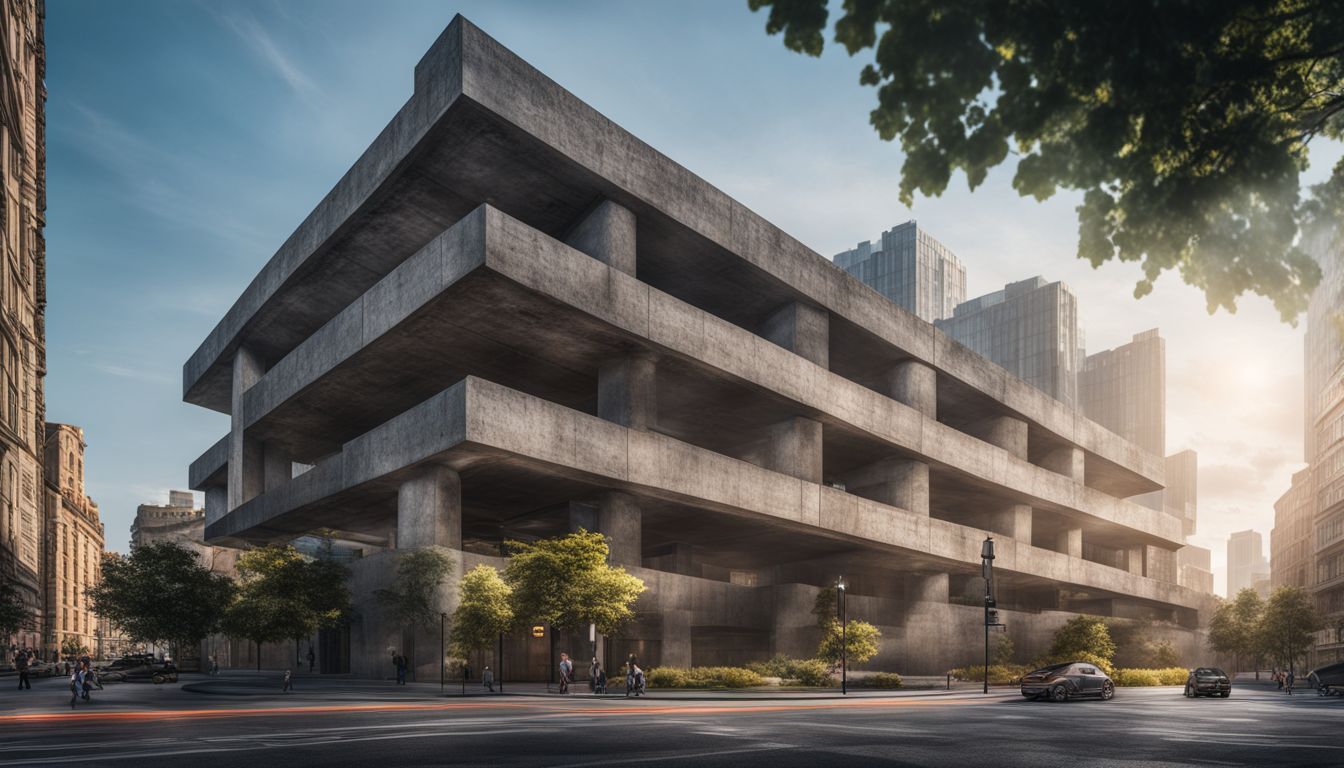
Improving the durability of reinforced concretes is essential for ensuring infrastructure longevity and resilience. Discover expert strategies and proven techniques that can enhance the structural lifespan of concrete reinforcements.
Sustainability of Reinforced Concrete Structures
Business owners, the sustainability of reinforced concrete structures is a crucial aspect of infrastructure management. Ensuring the longevity and resilience of these structures requires proactive monitoring and preventive maintenance measures.
Regular inspections help in identifying potential issues early on, allowing for timely intervention to address any deterioration. Implementing protective coatings tailored towards aggressive environments enhances the durability of reinforced concrete, safeguarding against corrosion and other forms of damage.
It’s not merely about preserving assets; it underpins the structural preservation essential for long-term infrastructure management.
Reinforcement maintenance plays a pivotal role in enhancing material durability, not only through routine upkeep but also by implementing preventative repairs when needed. These strategies are designed to enhance structural resilience while mitigating repair costs that may arise due to poor proactive maintenance practices.
Durability in Aggressive Environments
Concrete structures in aggressive environments face significant challenges that can compromise their durability. Exposure to harsh weather conditions, chemical substances, and heavy usage can lead to corrosion, deterioration, and structural damage.
It is crucial for business owners to implement proactive maintenance strategies tailored towards protecting concrete assets in these hostile settings. By conducting regular inspections and addressing minor issues promptly, businesses can prevent the escalation of damage caused by aggressive environments.
Additionally, applying specialised protective coatings can provide an extra layer of defence against corrosion and erosion. These measures not only extend the lifespan of concrete structures but also reduce repair costs and uphold asset longevity.
To combat the impact of aggressive environments on concrete durability, it’s essential to recognise the importance of tailored protective measures. Preventive maintenance practices such as re-coating strategies play a pivotal role in safeguarding concrete surfaces from corrosive elements found in aggressive settings.
Furthermore, investing in robust reinforcement maintenance ensures that structures remain resilient against environmental stresses over time. Implementing these proactive approaches enhances material durability amidst ever-changing conditions while preserving infrastructure integrity.
The Impact of Proactive Maintenance on Equipment

Proactive maintenance significantly reduces equipment repair costs and enhances operational efficiency, leading to increased productivity. Explore more to learn how proactive maintenance strategies can benefit your business.
Increase in Equipment Repair Cost Due to Poor Proactive Maintenance
Maintaining equipment in prime condition stands as a fundamental concern for us as business owners. Neglecting proactive maintenance can lead to a substantial increase in repair costs. Here’s a visual breakdown to illustrate how costs escalate when preventative care is sidelined:
| Aspect of Neglect | Immediate Impact | Long-Term Financial Impact |
|---|---|---|
| Infrequent Inspections | Minor issues go unnoticed. | Small repairs that could have been cheap become major expenses. |
| Lack of Routine Maintenance | Equipment efficiency drops. | Higher energy consumption and repair costs due to wear and tear. |
| Ignoring Minor Repairs | Equipment continues to operate with faults. | Significant damage occurs, leading to costly downtime and repairs. |
| Overlooking Cleaning and Lubrication | Build-up of dirt and grime; increased friction. | Parts wear out prematurely, requiring replacements and service. |
| Not Updating or Upgrading Equipment | Operations become less efficient. | Eventually, the equipment becomes obsolete, necessitating expensive upgrades or replacements. |
This table vividly shows that cutting corners on maintenance doesn’t save money in the long run. In fact, it does the opposite, leading to avoidable financial burdens. Acting with foresight in equipment care saves us from such predicaments.
Predictive Preventive Maintenance
Predictive preventive maintenance involves utilising data and analytics to predict potential equipment failures before they occur. By harnessing the power of technology, we can monitor the condition of critical assets and identify early warning signs of deterioration.
This proactive approach helps in avoiding unexpected downtime and costly repairs, ensuring the longevity of equipment and infrastructure. Implementing predictive preventive maintenance strategies ultimately leads to improved operational efficiency, reduced maintenance costs, and increased asset longevity.
The integration of predictive preventive maintenance techniques allows for strategic planning based on real-time equipment health data. By leveraging these insights, businesses can schedule maintenance activities at optimal times, minimising disruptions to operations while maximising asset reliability.
Restoring the Past, Building the Future: Maitland’s Approach to Concrete Repair
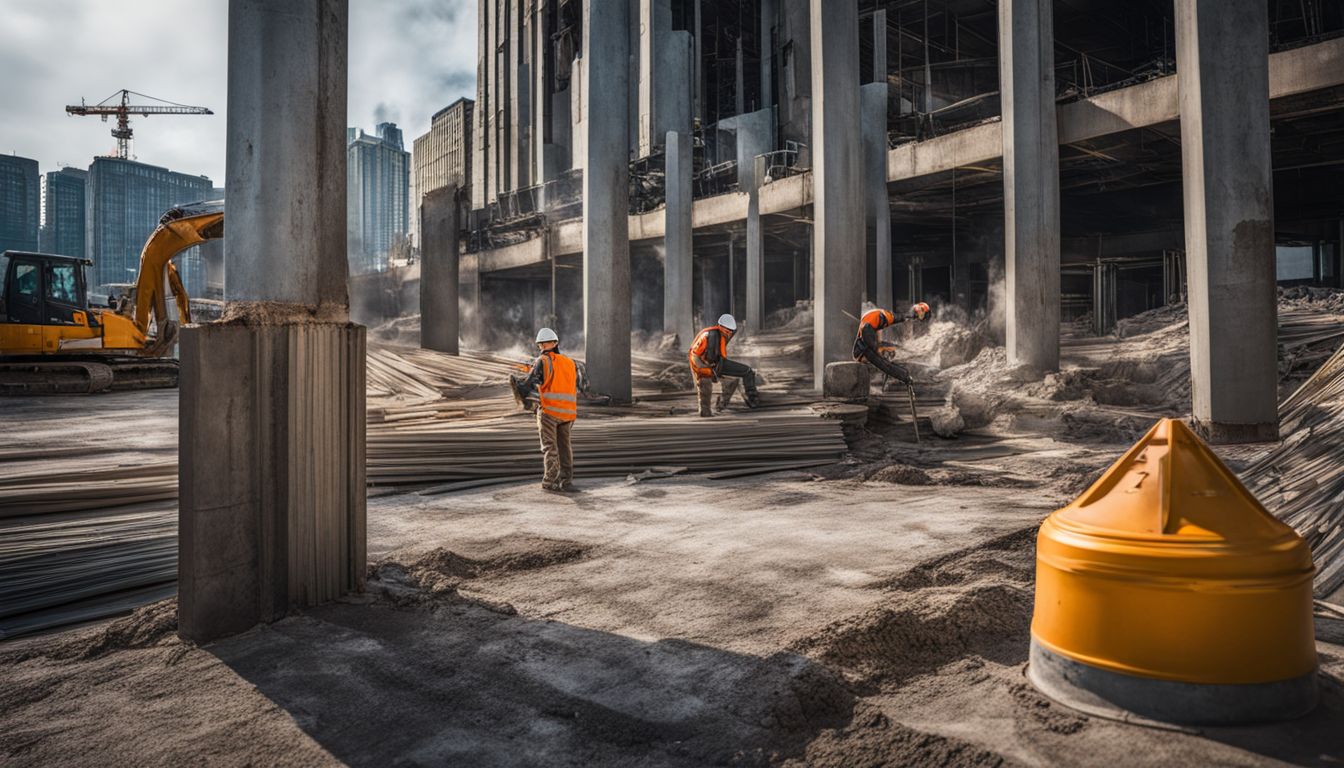
Maitland’s approach to concrete repair combines cutting-edge technology with proven methods. We prioritise durability, ensuring that repairs last longer, saving you on future maintenance costs.
Our bespoke solutions are tailored to your specific needs, guaranteeing structural longevity and resilience in aggressive environments. Maitland’s techniques not only restore the past but also build a lasting future for your infrastructure.
Our suite of comprehensive repair strategies focuses on enhancing material durability and construction longevity. Through meticulous attention to detail and innovative technologies, we ensure that your asset preservation is robust in the face of ever-evolving challenges in the realm of infrastructure management.
Conclusion
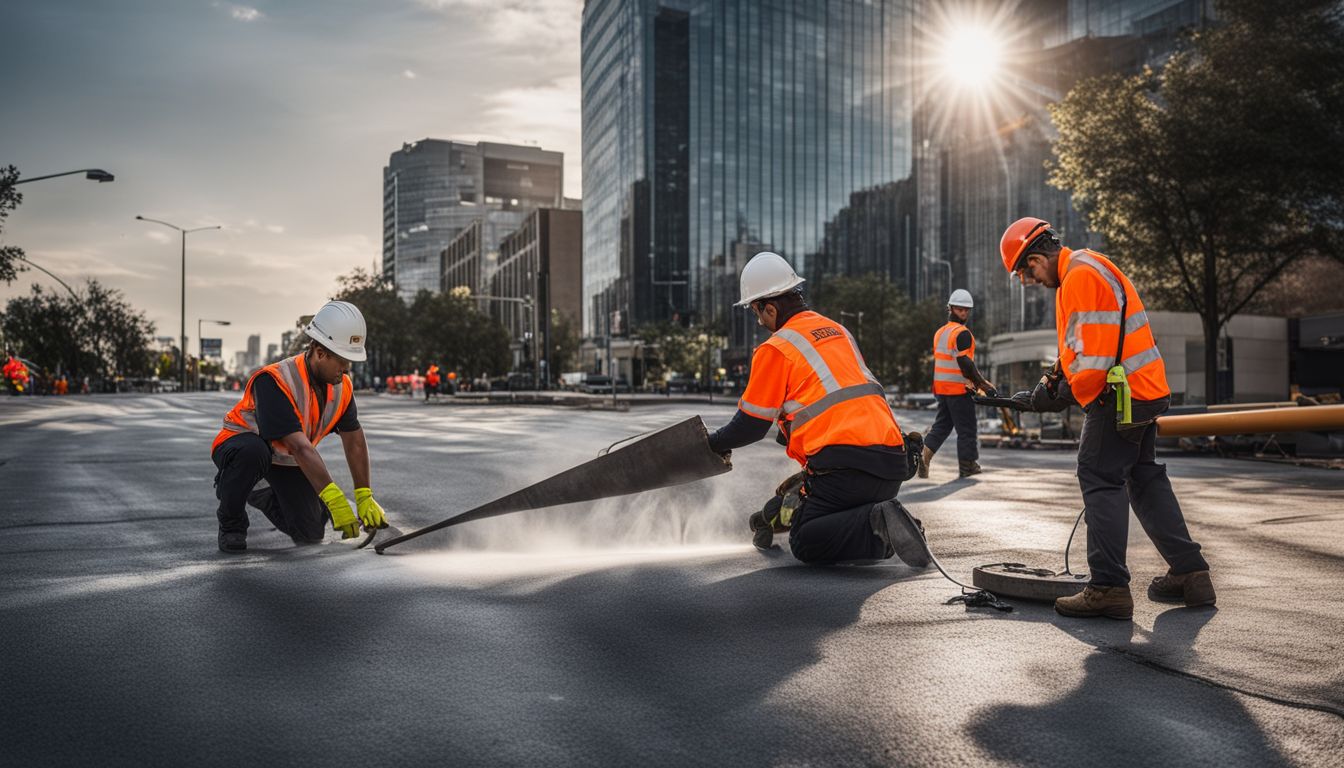
Ensure the longevity of your concrete assets by embracing proactive maintenance strategies. Regular inspections, addressing minor issues promptly, and implementing re-coating strategies are vital for ensuring structural durability.
By prioritising preventive measures and appropriate repair techniques based on thorough assessments, you can extend the lifespan of your concrete structures. Embrace a proactive maintenance approach to preserve pavement integrity while also enhancing the resilience of reinforced concrete against aggressive environmental factors.
Proactive maintenance not only increases equipment longevity but also reduces repair costs significantly, making it crucial for sustainable infrastructure management.
